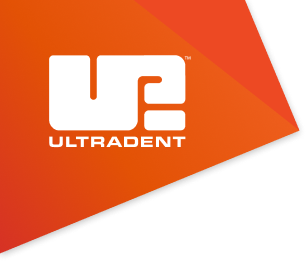Editor’s Note: This is part two of our three-part monthly series on adapting your dental practice for the AI-driven future of search. This series is written by the team at My Social Practice.
Last month, we talked about how your patients are bypassing Google entirely and asking ChatGPT about their dental problems. Well, it doesn’t end there: even when they use Google, the game has changed completely.
Here's what's really happening: while you've been optimizing your dental website to rank #1 in search results, AI has quietly started generating answers that make clicking through to your website... optional.
Welcome to the GEO revolution, where Generative Engine Optimization is replacing traditional SEO as the battleground for patient attention. And if you don't understand how this works, you're about to become invisible, left behind by traditional dental SEOstrategies.
The Death of "Click Here to Learn More"
Let's start with looking at what happens when someone searches for dental information today.
The old way (what your dental marketing firm probably still thinks happens):
- Patient types "tooth pain after root canal"
- Google shows 10 blue links to dental websites
- Patient clicks on your perfectly optimized page
- Patient reads your content and calls your office
The new reality (what's actually happening):
- Patient asks "Why does my tooth still hurt three days after a root canal?"
- AI scans dozens of dental websites, medical journals, and patient forums simultaneously
- AI generates a comprehensive answer right in the search results
- Patient gets their answer without ever visiting your website
See the problem? In the old system, ranking #1 guaranteed visibility. In the new system, AI might pull information from the #47 result and completely ignore your top-ranking page if it doesn't contain the specific answer the patient needs.
Google's AI Overviews: The Game-Changer You Can't Ignore
This isn't some distant future scenario. It's happening right now through Google's AI Overviews, and it's completely changing how patients find dental information.
What AI Overviews look like: When someone searches for "how to care for teeth after wisdom tooth removal," instead of seeing your website at the top of search results, they see a comprehensive AI-generated answer box that covers:
- Pain management techniques
- Foods to avoid
- When to contact their dentist
- Signs of complications
- Recovery timeline

And if you press the ‘show more’ button, it expands significantly.

The reality: patients get complete answers without clicking into any websites. Your perfectly optimized post-op care page? It might be feeding information to the AI Overview, but the patient never sees your practice name or visits your site.
Even worse: AI Overviews appear for increasingly specific dental queries. Search for "dental crown vs veneer for front tooth" and you'll get a detailed comparison generated from multiple dental sources, synthesized into one answer.

The kicker: traditional metrics like "ranking #1 for crown vs veneer" become meaningless when the AI Overview provides the complete answer at the top of the page, pushing all traditional results below the fold.
How AI Actually "Reads" Your Dental Content
When someone asks an AI system "What should I expect during a dental cleaning?", here's what actually happens behind the scenes:
Step 1: The Query Analysis
The AI doesn't just look for pages containing "dental cleaning." It understands the intent: this person wants a step-by-step breakdown of the procedure, probably because they're anxious about their upcoming appointment.
Step 2: The Content Scan
The AI simultaneously scans hundreds of sources, looking for content chunks that address different aspects of the query:
- What happens during the procedure itself
- How long it takes
- Whether it hurts
- What to expect afterward
Step 3: The Credibility Assessment
The AI evaluates sources based on:
- Author credentials (is this written by a dentist?)
- Content depth (does this actually answer the question?)
- Source authority (is this from a reputable dental practice?)
- Freshness (is this current information?)
Step 4: The Synthesis
The AI weaves together information from multiple sources to create a comprehensive answer in the AI Overview, potentially using your content without driving traffic to your site.
Content that addresses actual patient concerns performs better than generic marketing copy. AI dental receptionists like Annie AI are becoming essential because they understand this shift toward genuine patient service.
Real-World Example: How AI Overviews Handle Dental Questions
Let's break down exactly what happens when someone searches "How much should a dental crown cost?"

What the AI Overview includes:
- National average costs ($500–$3,500)
- Factors affecting pricing (material type, location, complexity)
- Insurance considerations
- Payment plan options
- Timeline for the procedure
The sources: The AI might pull cost ranges from a dental practice in California, insurance information from a practice in Texas, and material comparisons from a dental lab website. Your practice's crown information could be in there, but you won't necessarily get credit or traffic.
Plot twist: even if your dental practice has the best traditional SEO for "crown cost," you might not be featured in the AI Overview if your content doesn't provide the specific, comprehensive information the AI determines is most helpful.
The Source Credibility Game: Why Some Dental Practices Win
AI systems are surprisingly sophisticated about evaluating source credibility, especially for health-related queries. Here's what makes them choose your content for AI Overviews:
Author Authority: Content clearly authored by dentists gets weighted heavily. "By Dr. Sarah Johnson, DDS" beats anonymous content every time.
Specific Expertise: A post about pediatric dentistry written by a pediatric dentist outranks the same post by a general dentist.
Detail and Context: "Root canals are generally painless" gets ignored. "Most patients report mild discomfort for 24–48 hours after the procedure, manageable with over-the-counter pain relievers" gets featured.
Current Information: Recent content gets priority over your 2018 blog posts.
The Citation Challenge: Getting Credit in AI Overviews
Here's the frustrating part: even when AI uses your content in Overviews, you might not get meaningful credit.
How AI Overviews handle attribution:
- Sometimes they cite specific practices at the bottom
- Often they list multiple sources without clear attribution
- Frequently they synthesize information without specific credit
You could provide perfect information that helps thousands of patients through AI Overviews, but without clear attribution, you're not getting new patient calls. Most dental marketing strategies focus on ranking above other dental websites. But AI Overviews don't care about rankings. They care about which content best answers the specific question being asked.
The shift: instead of optimizing to rank #1, you need to optimize to be selected by AI as the most reliable source for specific dental information that gets featured in Overviews.
The New Content Strategy: Writing for AI Overviews
Stop writing for search engines and start writing for AI systems that generate immediate answers.
The old approach: "Our dental practice offers the best root canal procedures with advanced technology and experienced dentists."
The new approach: "Root canal procedures typically take 90 minutes and involve three main steps: cleaning the infected tissue, disinfecting the canal, and sealing it with a biocompatible material. Most patients experience mild discomfort for 24-48 hours afterward, manageable with ibuprofen."
The second version provides specific, factual information that AI can synthesize into comprehensive answers for AI Overviews.
Bottom line: the practices that understand how to create content for AI Overviews will dominate patient attention. Those fighting for traditional rankings will find themselves increasingly invisible, no matter how much they spend on dental marketing services.
The good news? You don't need to figure this out on your own.
Next month, we've got you covered with a complete step-by-step breakdown of exactly how to write content that AI Overviews can't resist. We'll walk you through real examples, show you the specific formatting techniques that get you cited, and give you templates you can actually use. No more guessing whether your content will work in this new landscape.
FAQs
Can an AI receptionist improve my practice's visibility in AI search? AI receptionists like Annie AI don't just handle patient calls and booking, they also help your practice create the type of conversational, question-and-answer content that AI search systems love. When Annie AI logs common patient questions and your responses, you're building a database of real patient concerns addressed in natural language.
This question-and-answer format mirrors exactly what AI Overviews look for when generating responses. Plus, AI receptionists can help ensure your practice information stays current and comprehensive across all digital touchpoints, making it more likely that AI systems will cite your practice as a reliable source for dental information.
Can I opt out of having my content used in AI Overviews? Currently, there's no way to specifically opt out of AI Overviews while maintaining search visibility. The same content that helps you rank traditionally can be used by AI systems to generate these overview answers.
How can I increase my chances of being cited in AI Overviews? Focus on creating comprehensive, factually accurate content with clear author credentials. Write in a natural, conversational tone that directly answers common patient questions with specific details rather than vague marketing statements.
Are AI Overviews hurting website traffic for dental practices? Many practices are seeing reduced click-through rates for informational queries as patients get answers directly from AI Overviews. However, practices with strong local optimization and clear calls-to-action can still capture patients ready to book appointments.
Should I change my entire content strategy because of AI Overviews? Don't abandon traditional SEO entirely, but expand your approach. Create content that works for both traditional search rankings and AI synthesis. Focus on being the authoritative source for specific dental topics rather than trying to rank for broad, competitive terms.
How quickly do changes appear in AI Overviews? AI systems can incorporate new content relatively quickly, sometimes within days or weeks, unlike traditional SEO which can take months. However, building consistent authority that gets you regularly featured takes time and consistent, high-quality content creation.








